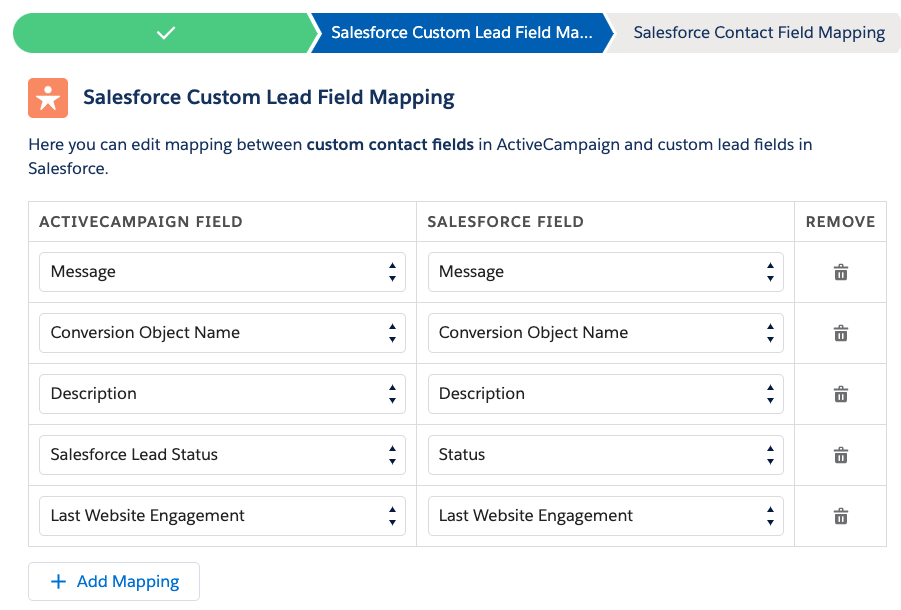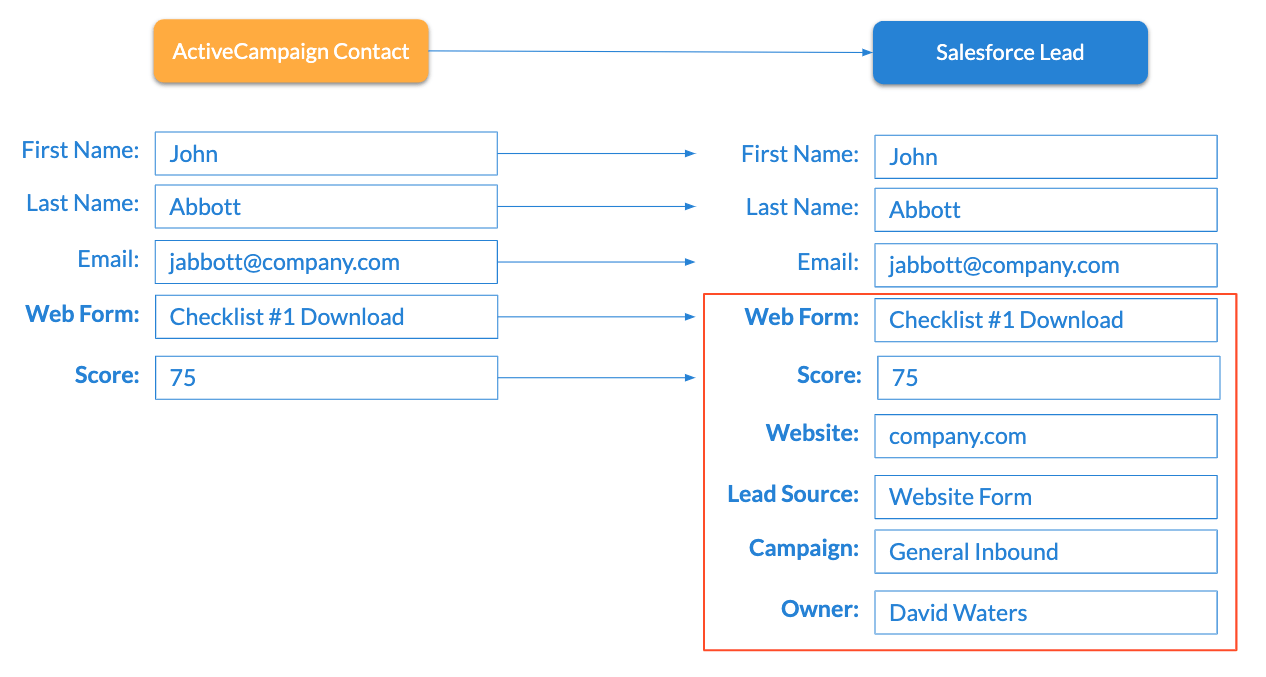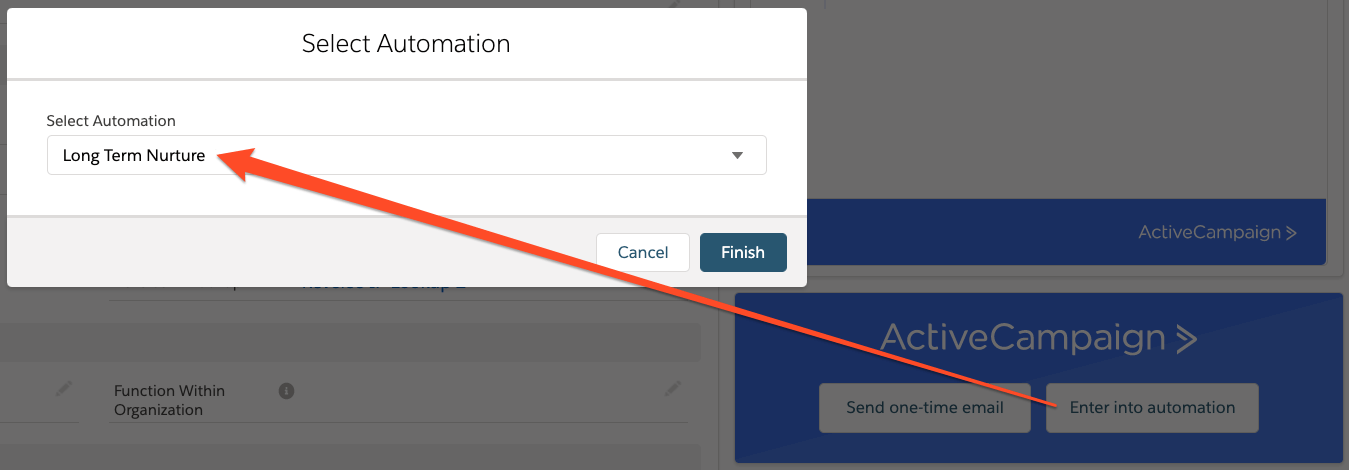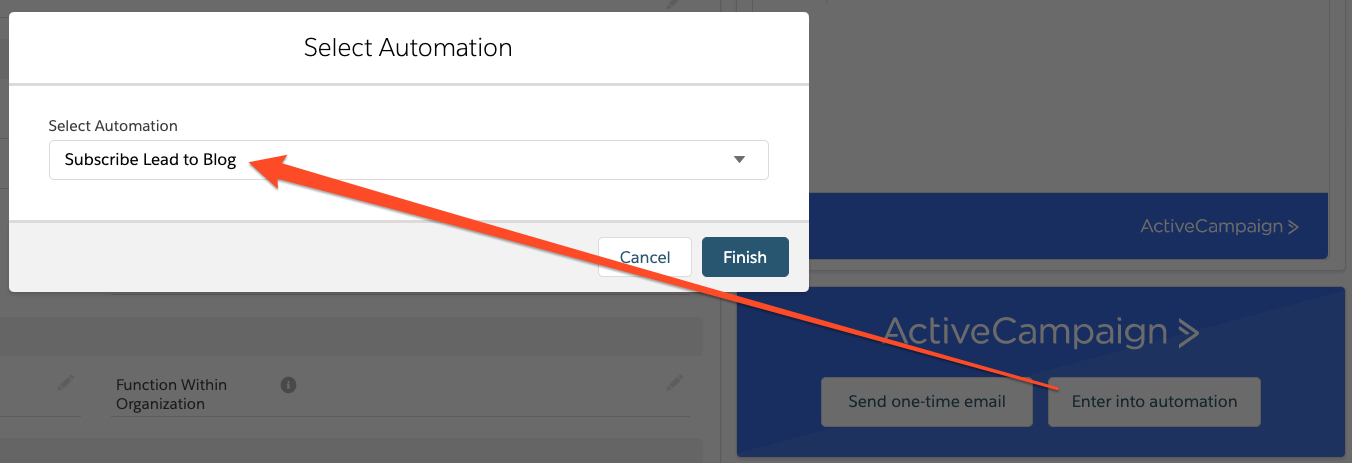ActiveCampaign’s built-in CRM is sufficient some organizations. However, other organizations that use ActiveCampaign need the full power of Salesforce. While Salesforce is generally perceived as a high-end CRM, Salesforce Essentials is an affordable option for small business.
Conversely, for Salesforce small to mid size business customers that have made the decision to adopt a marketing automation system, ActiveCampaign is a surprisingly powerful customer experience platform that’s worth considering. It also comes at a lower cost than other popular marketing systems.
ActiveCampaign released direct integration with Salesforce in 2019.
Tailoring the ActiveCampaign Salesforce integration
The AppExchange app for Salesforce has a number of integration options. You can decide whether to synchronize only Salesforce Leads with ActiveCampaign Contacts or to also sync Salesforce Contacts. You can choose which standard and custom fields to map between platforms.

Layering On More Value
Through the use of custom fields, Salesforce Lightning Process Builder and ActiveCampaign Automations, you can add a lot of business value to the stock integration between the two platforms—without the need for hiring a developer.
Part of this value is pre-baked into freely available ActiveCampaign recipes.
The following will serve as examples of how the integration can be tailored. You will likely come up with your own set of requirements and resulting configurations.
1. Qualify website Leads before sending them to Salesforce
If a visitor to your website submits their information through a form and is then added to an ActiveCampaign list, you can require that the Contact take further action before they’re synchronized to Salesforce as a new Lead.
For example, the Contact must open a follow-up email or they need to make a return visit to your website before they are passed through to sales.
This will allow your salespeople to focus on the highest quality leads.
2. Enrich website leads prior to and after sending them to Salesforce
Before an ActiveCampaign Contact is passed through to Salesforce as a Lead, additional information can first be added to that Contact. This information can be synchronized with Salesforce. Upon Lead creation in Salesforce, a Process can be used to add even more information to the Lead.
For example, the name of the form that the Lead filled in can be added and synced to Salesforce. The Lead Source can be set to “Website Form” on Lead creation.
Your salespeople will be better informed when following up with Leads.

3. Allow your salespeople to add a Lead to an ActiveCampaign email sequence
A salesperson has a conversation with a Lead. The Lead’s organization is a fit for your products or services, but the timing is not right. You may want to send an informative email out to the Lead every month or quarter to stay top of mind.
A salesperson has access to a button that lets them select any ActiveCampaign Automation that has been labeled “Salesforce.”

4. Allow salespeople to subscribe a Lead to your blog
If you manage your blog subscriptions in ActiveCampaign, with the Lead’s permission, a salesperson can add a Lead to your blog subscription list.
This is another way to keep your brand in front of a Lead or a customer.

5. Halt an automated follow up series of emails when a salesperson makes progress with a Lead
A website visitor downloads a checklist or other digital asset in exchange for their name and email address. You have set ActiveCampaign to automatically send two or more follow up emails. But if a salesperson gets into direct contact with the Lead, the automated emails should be suspended.
You can instruct ActiveCampaign to halt an automated email sequence when a Lead progresses to a Status such as “Contacted”, “Working” or “Qualified” in Salesforce.
6. Automatically add Contacts at new customers to targeted email lists in ActiveCampaign
An Opportunity is marked Closed Won in Salesforce by a salesperson. You now have a new customer. The new customer Account has associated Contacts with different roles within their organization. Moving forward, you want to keep Contacts current with information that’s relevant to their role.
For example, “buyer” contacts can receive upcoming renewal notifications. Technical contacts can receive security alerts and similar notifications.
7. Inform salespeople of customer website activity
If you add ActiveCampaign tracking code to your website, the website activity of Leads and customers can be displayed in Salesforce.
Salespeople can use the information about someone’s website engagement to direct the next email or conversation.
8. Manage partner referred Leads
If you receive leads from referral partners, you can create an efficient end-to-end process for capturing and tracking partner referred leads. You can also ensure that partners are compensated for those valuable referrals so that partners keep the referrals coming.
In a future post, I’ll outline the mechanics for capturing and managing partner referred leads using ActiveCampaign and Salesforce CRM.
Sales and marketing agreement on functionality
These are just a few examples of how you can take the ActiveCampaign to Salesforce integration to the next level.
There should be ongoing conversations between the sales and marketing teams to define and refine the rules that determine what information is transferred between systems and under what conditions.
If you’d like to discuss integration requirements specific to your business, please contact us.



